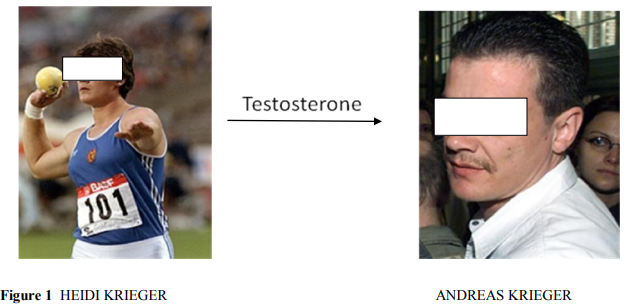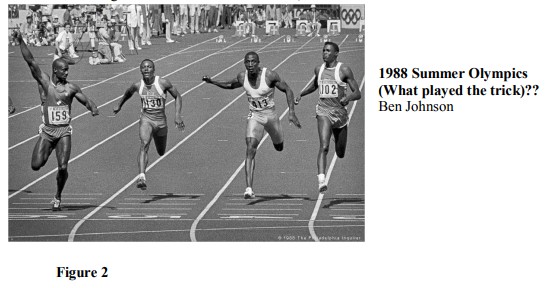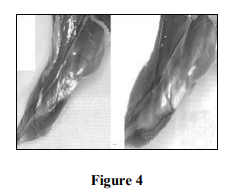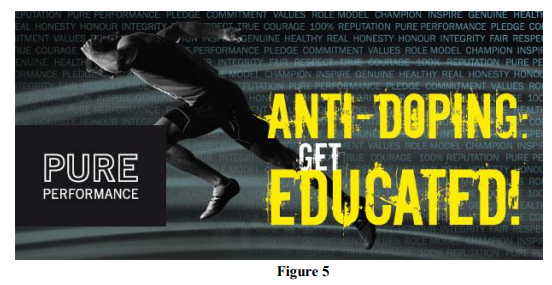IJCRR - 4(22), November, 2012
Pages: 133-139
Date of Publication: 24-Nov-2012
Print Article
Download XML Download PDF
DOPING IN SPORTS- PAST, PRESENT AND FUTURE
Author: Vishesh Rohatgi, Narayana Reddy S.
Category: Healthcare
Abstract:Doping is widely known as the use of banned substances and practices by sports personnel particularly athletes in an attempt to improve sporting performances. There are at least two essential reasons to support the fight against doping: the depth of corruption on the „fair competition?- the sine qua non of all sporting events, and the potential harmful effects on athletes. To ensure equal competitive conditions and to protect the health of athletes, the International Olympic Committee, WADA (World Anti-Doping Agency) and International Sports Federations have accepted use of performance-enhancing substances and methods by competitors directly or indirectly as „doping?, and have forbidden them. Nevertheless, the desire to win for acclaim and/or associated benefits drives athletes to misuse these drugs and methods. When current antidoping programmes were developed, the most frequently used doping agents were xenobiotics, such as adrenergic stimulants and anabolic steroids that are readily detectable in urine with the use of gas chromatography and mass spectrometry. As effective and stringent laws came into effect, use of traditional doping agents were restrained but some athletes turned to other means to improve performance, including blood doping and use of recombinant peptide hormones such as Erythropoietin and insulin-like Growth factor-1. And hence highlighted the potential misuse of this technology and „gene doping? .With progress in genetic engineering, many other genes with this potential for abuse will be discovered and tried subsequently. For this reason, it is important to promote research and to develop timely legal regulations in the field of gene doping.
Keywords: doping, dope, sports, androgenic steroids, gene doping, biological passport
Full Text:
INTRODUCTION
The word „Dope? comes from the Dutch word "doop" [1] (a thick dipping sauce) that entered American slang to describe how robbers stupefied victims by mixing tobacco with the seeds of Datura stramonium, known as jimsonweed, which contains a number of tropine alkaloids, causing sedation, hallucinations and confusion. Doping in sports is not a new phenomenon; Arthurian knights supposedly drank magical potions from the cup of Merlin. The Ancient Olympics in Greece were filled with corruption and doping to such an extent that the games had to be dissolved. In Ancient Rome, gladiators used to drink herbal infusions to strengthen them before chariot races and going into battle [2]
Perhaps the most sinister of all is the publication of the book "Faust's Gold" which gives an indepth look at the systematic doping machine implemented by the German Democratic Republic (GDR) in the 1970s. Many of the athletes were given performance enhancing agents and around 142 former female athletes experienced androgenic changes.[2], [3] Heidi Krieger, the GDR shot-putter had so many testosterone injections that she opted for a sex change operation and now lives as Mr. Andreas Krieger. It is estimated that around 10,000 athletes were processed through the GDR doping machine. [2], [3]

A famous case of illicit use of androgenic steroids in a competition was Canadian Ben Johnson's victory in the 100 m at the 1988 Summer Olympics. He failed the drug test when Stanozolol was found in his urine. He later admitted of using steroid as well as Dianabol, Testosterone Cypionate, Furazabol, and Human growth hormone amongst other things. Johnson was therefore stripped of his gold medal and lost his recognition of what had been a world-record performance. [4]

In 1998 the entire Festina cycling team were excluded from the Tour de France following the discovery of a team car containing large amounts of various performance-enhancing drugs. The team director later admitted that few of them routinely given banned substances. Operación Puerto (Operation Mountain Pass) [5] is the code name of a Spanish Police operation against the doping network of Doctor Eufemiano Fuentes, started in May 2006, which resulted in a scandal that involved several of the world most famous cyclists at the time. India has been making strides on the international sports scene and now has been associated with what often comes with success — a doping scandal. Indian team players in the 4x400-meter relay squad that won gold at the Commonwealth and Asian games were among eight track and field athletes banned for out-of-competition doping violations. While the trial is going on, according to athletes, they tested positive due to intake of Ginseng found commonly in various ayurvedic products as well as many health/nutritional supplements [6] like Revital. Ginseng has been used as an energy booster; ginseng root does not contain prohibited substances, but products containing ginseng have tested positive for ephedrine. [7] No game is spared from doping. In Kabaddi world cup 2011, India lifted the title. It was found out later that 53 players including an Indian player were tested positive for anabolic steroids. [8]
Fighting to save the soul of sport
In 1967 The International Olympic Committee (IOC) was established in order to deal with the increasing problem of doping in the sports world. The initial goal of putting in place an anti-doping structure was rapidly widened to encompass the following three fundamental principles:
- Protection of the health of athletes.
- Respect for both medical and sport ethics.
- Equality for all competing athletes. In November 1999, The World Anti-Doping Program [9] was developed and implemented to harmonize anti-doping policies and regulations within sports
- organizations and among governments.
The three levels of the World Anti-Doping Program are: 1. World Anti-Doping Code (Code) 2. International Standards 3. Models of Best Practice and Guidelines Levels 1 (Code) and 2 (International Standards) are mandatory for all Code signatories. Level 3 (Models of Best Practice and Guidelines, including Model Rules) is recommended by WADA, and is made available to Code signatories upon request but is not mandatory. And since then, Doping is defined as the occurrence of one or more of the anti-doping rule violations set forth in the Code [9]. The Code is the fundamental and universal document upon which the World Anti- Doping Program in sports is based. [9] Going upon WADA standards, National Anti-Doping agency was established in March 2008, which follows the Code. In February 2011, the United States Olympic Committee and the Ad Council launched an antisteroid campaign called Play Asterisk Free, which was aimed at teens. The campaign first launched in 2008 under the name "Don't Be an Asterisk" Anti-doping research (ADR) contributes to the development and implementation of efficient programs for the control of doping and to provide much needed information and education regarding doping to the concerned sports bodies as well as the public. It utilizes research, analytical services and education to identify dangerous and banned substances in sports and help halt their use. In 2009, Anti doping research developed an equine test for the blood-boosting drug CERA (short for the brand name Mircera; also known as Continuous erythropoietin receptor activator).[10] Testing and analysis of samples are done in WADA-accredited laboratories and the results are reviewed and notified and appropriate action taken including suspension from athletics and forfeiture of medals, points and prizes.

Athletes seeking to avoid testing positive for doping use various methods to cheat on the drug tests. The most common methods include: ? Urine replacement, which involves replacing dirty urine with clean urine from someone who is not taking banned substances. Urine replacement can be done by catheterization or with a prosthetic penis such as The Original Whizzinator. ? Diuretics, used to cleanse the system (dilute the urine) before having to provide a sample. ? Blood transfusions, which increase the blood's oxygen carrying capacity, could trigger a positive test result without the presence of drugs Banned Drugs According to WADA 2011 prohibited list [11] prohibited drugs include (list not complete) Anabolic Androgenic Steroids (AAS): Testosterone, Stanozolol, Danazol Peptide hormones, growth factors and related substances Erythropoietin (EPO), Insulin, Growth hormone, Insulin like growth factor-1(IGF-1) Beta-2 Agonist: All beta-2 agonist except salbutamol and salmeterol Hormone antagonists and modulators: Aminoglutethimide, tamoxifen, raloxifene, clomifene Diuretics and other masking agents: Furosemide, Thiazides, Albumin, Dextran, Mannitol Steroid inhalers and beta-agonist inhalers are mostly permitted with prior written notification but are banned orally. Similarly, steroids are permitted with notification by intraarticular administration but are banned intramuscularly or intravenously. Beta-blockers are banned in control sports only e.g. archery, shooting, bobsleigh, snooker, darts, and synchronized swimming. Alcohol is banned in sports such as motor-racing and shooting where performance of skilled tasks may be affected. [12], [13] Many athletes do not realise that caffeine is also banned in sport; a level greater than 12 micrograms/ml constitutes an offence. Many of the over the counter analgesics contain caffeine as do beverages, sports drinks and dietary supplements. [14]
Doping in Sports:
Future Gene doping is defined as the "non therapeutic use of cells, genes, genetic elements, or modulation of gene expression, having the capacity to improve athletic performance"[15] Gene doping is done using techniques developed for gene therapy. The most commonly used method is a viral vector, a “delivery vehicle” that does not cause disease, contains the gene of interest, and can be engineered to inject this gene into a specific type of tissue. In the case of certain muscle-enhancing treatments, the virus is injected directly into muscle tissue, where it proceeds to “infect” the muscle cells? nuclei, replicating the gene and ultimately increasing muscle mass. Injection of EPO (Erythropoietin) increases the number of red blood cells and thus enhances oxygen-carrying capacity. This conventional method of doping is believed to be in widespread use in endurance sports like cycling and longdistance running. In some cases doping comes natural!! Eero Mäntyranta, a Finnish cross-country skier who won two gold medals in the 1964 Winter Olympics had familial mutation which led to an excessive response to EPO, which resulted in very high levels of red blood cells. This high level of red blood cells and the accompanying increase in oxygen-carrying capacity helped him and several members of his family do well in endurance sports.[16] Question arises Should natural doping be banned ? When muscle tissue is damaged, as it is during exercise, satellite cells which are around the wounded fiber proliferate to help the repair process; the repaired muscle fiber, hence is bulkier and stronger. IGF-1 gene partly controls the building and repair of muscles by stimulating the proliferation of satellite cells. [16].

The leg muscles of mice treated with IGF-1 (right) are bigger than the leg muscles of untreated mice (left). http://news.bbc.co.uk/2/hi/science/nature/349383 9.stm Another gene that encodes the antigrowth factor myostatin has the opposite effect, halting the proliferation of satellite cells. This myostatin gene is effectively blocked in the Belgian Blue Bull breed of cattle. The absence of myostatin not only allows unchecked muscle growth but also interferes with fat deposition; the result is a lean, “double-muscled” bull. [16] In such a case someday we can chose our own „six packs?! A team of scientists from the U.S. and South Korea have engineered what they call a “marathon” mouse. This mouse has been given an enhanced form of the gene PPAR-Delta, a gene that regulates the expression of several other genes and ultimately enhances “slow-twitch” muscle fibers. The scientists found that the enhanced mice can run roughly twice as far as normal mice, and they can run for about an hour longer than the average 90 minutes a normal mouse can run, even without previous exercise. [17] The enhanced mice experienced an increase in slow-twitch muscle fibers and a decrease in fasttwitch fibers, as well as an increase in fat burning in adipose tissues [17] Another famous hormone is Human growth hormone (HGH) and given the lack of a specific test and claims of human growth hormone performance benefits, abuse has markedly increased. The side-effect profile of HGH is particularly grim and patient may present with acromegalic features. One of the first elite athletes to admit to the abuse of Human growth hormone was Ben Johnson. Relatively new additions to the armamentarium are the artificial oxygen carriers such as perfluorocarbon emulsions and haemoglobin solutions. [2] Of course, athletes might also be interested in these genes and hormones, especially athletes in endurance sports like cycling and long-distance running, as it could “make their exercise more efficient” and help them increase endurance more quickly. More importantly it is difficult to be detected by usual tests.
Don’t tamper your Biological passport
It is an individual, electronic record for professional athletes, in which profiles of biological markers of doping like testosterone over epitestosterone ratio (T/E), hemoglobin, RBC count, PCV, and results of doping tests are collated over a period of time. The fundamental principle of Athlete biological passport is based on monitoring of athletes biological variables over a period of time rather than direct detection of doping substance [18] While a new drug test must be developed and validated for each new drug, the main advantage of the athlete passport is that it is based on the stability of the physiology of the human being. The blood module of the athlete passport aims to detect any form of blood doping, the steroid module- any form of doping with anabolic steroid and the endocrine module- any modification of the growth hormone/IGF-1 axis.

SUMMARY
Despite the development and research, doping in sports is on the rise in elite, amateur and school sports. Where some take drugs due to lack of awareness or to seek professional advantage, others feel pressurized into considering doping as the only viable option to level the playing field. Going with the notion of „Once a cheat, always a cheat? an effective anti-doping program must incorporate educational components in addition to testing. To assess the medical and social aspect of the doping phenomenon, it is necessary to conduct surveys and periodic surveillance on abused drugs. With „Sports medicine? coming up as an emerging field, it needs to be encouraged in medical schools. Research needs to be undertaken on potential doping agents and improvement of detection techniques. Information and education should be provided to athletes as well as to the society. The potential benefits to society and to the individual from sports will only be maximized where fair play is ensured at all costs. The field of gene therapy and by extension, gene doping, is full of unpredictable and dangerous results and need to be monitored stringently. Clearly technical advances cannot address what is essentially a behavioral problem.
ACKNOWLEDGEMENT
Authors acknowledge the immense help received from the scholars whose articles are cited and included in references of this manuscript. The authors are also grateful to authors / editors / publishers of all those articles, journals and books from where the literature for this article has been reviewed and discussed.
References:
1 Dope. Online Etymology Dictionary. Retrieved June 14, 2012, available from Dictionary.com website: http://dictionary.reference.com/bro wse/dope
2 Sheehan Orla, Quinn Brendan.Doping in Sports-A deadly game [online]. Available from: URL: http://www.theathlete.org/doping-insport.htm
3 Ungerleider S. Faust's gold: inside the East German doping machine.1st edition. St Martin's Press; 2001
4 Mackay Duncan. “Lewis: „Who cares I failed drug test? [online]. 2003 [cited 2003 April 24]. Available from: URL: http://www.guardian.co.uk/sport/2003/apr/24 /athletics.duncanmackay
5 Inside the blood doping investigation [online]. 2006 [cited 2006 July 10]. Available from: URL: http://www.spiegel.de/international/spiegel/0 ,1518,425939,00.html
6 Koshie Nihal.Dope-tainted athletes played Russian roulette: WADA [online]. 2012 [cited 2012 Feb 09]. Available from: URL: http://www.indianexpress.com/news/dopetai nted-athletes-played-russian-roulettewada/909789/
7 Bledsoe Jim. Ginseng: Another scientific study gives the thumbs down [online]. Available from: URL: http://www.pponline.co.uk/encyc/0170.htm 8
Kabaddi doping: Indian player found positive [online]. Available from: URL: http://www.dayandnightnews.com/2011/11/k abaddi-doping-indian-player-found-positive/
9 World Anti-Doping Code [online]. 2009 [cited 2009]. Available from: URL: http://www.wada-ama.org/en/World-AntiDoping-Program/Sports-and-Anti-DopingOrganizations/The-Code/
10 Anti-Doping research develops new equine test for the powerful blood-boosting drug CERA [online]. 2009 [cited 2009 Nov 24]. Available from: URL: http://www.antidopingresearch.org/PressRele ase_Nov24_09.pdf
11 The 2011 Prohibited List. The World AntiDoping code [online].2010 [cited 2010 Sept 18]. Available from: URL: http://www.wadaama.org/Documents/World_AntiDoping_Program/WADP-Prohibitedlist/To_be_effective/WADA_Prohibited_List _2011_EN.pdf
12 Mottram DR. Banned drugs in sport. Does the International Olympic Committee list need updating? Sports Med 1999; 27:1-10
13 O'Brien CP, Lyons F. Alcohol and the athlete. Sports Med 2000; 29:295-300
14 Green GA, Catlin DH, Starcevic B. Analysis of over-the-counter dietary supplements. Clin J Sports Med 2001; 11:254-9
15 The 2008 Prohibited List. The World AntiDoping code [online]. 2007 [cited 2007 Sept 22]. Available from: URL: http://www.wadaama.org/rtecontent/document/2008_List_En. pdf
16 Sweeney, H.L. Gene Doping. Scientific American [serial online] 2004 July [cited 2004 July] pp. 63-69.Available from: URL: http://www.bio.utexas.edu/courses/kalthoff/b io301C/readings/13Sweeney.pdf
17 Yong-Xu Wang, Chun-Li Zhang, Ruth T. Yu et al. Regulation of muscle fiber type and running endurance by PPAR-δ. PLoS Biol [serial online]. 2004 Oct [cited 2004 Aug 24]; 2(10). Available from: URL: http://www.plosbiology.org/article/info:doi/1 0.1371/journal.pbio.0020294
18 Athlete Biological Passport. World Anti Doping Agency [online]. 2009 [cited 2009 Dec]. Available from: URL: http://www.wada-ama.org/en/ScienceMedicine/Athlete-Biological-Passport.
|






 This work is licensed under a Creative Commons Attribution-NonCommercial 4.0 International License
This work is licensed under a Creative Commons Attribution-NonCommercial 4.0 International License